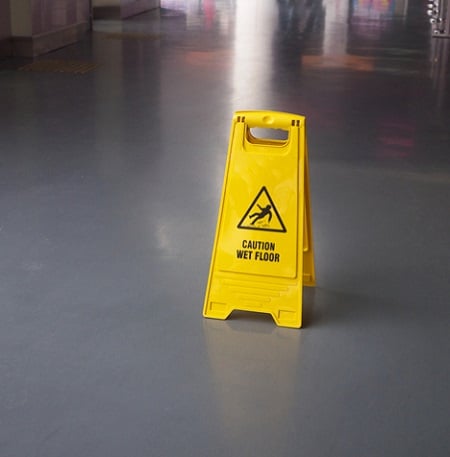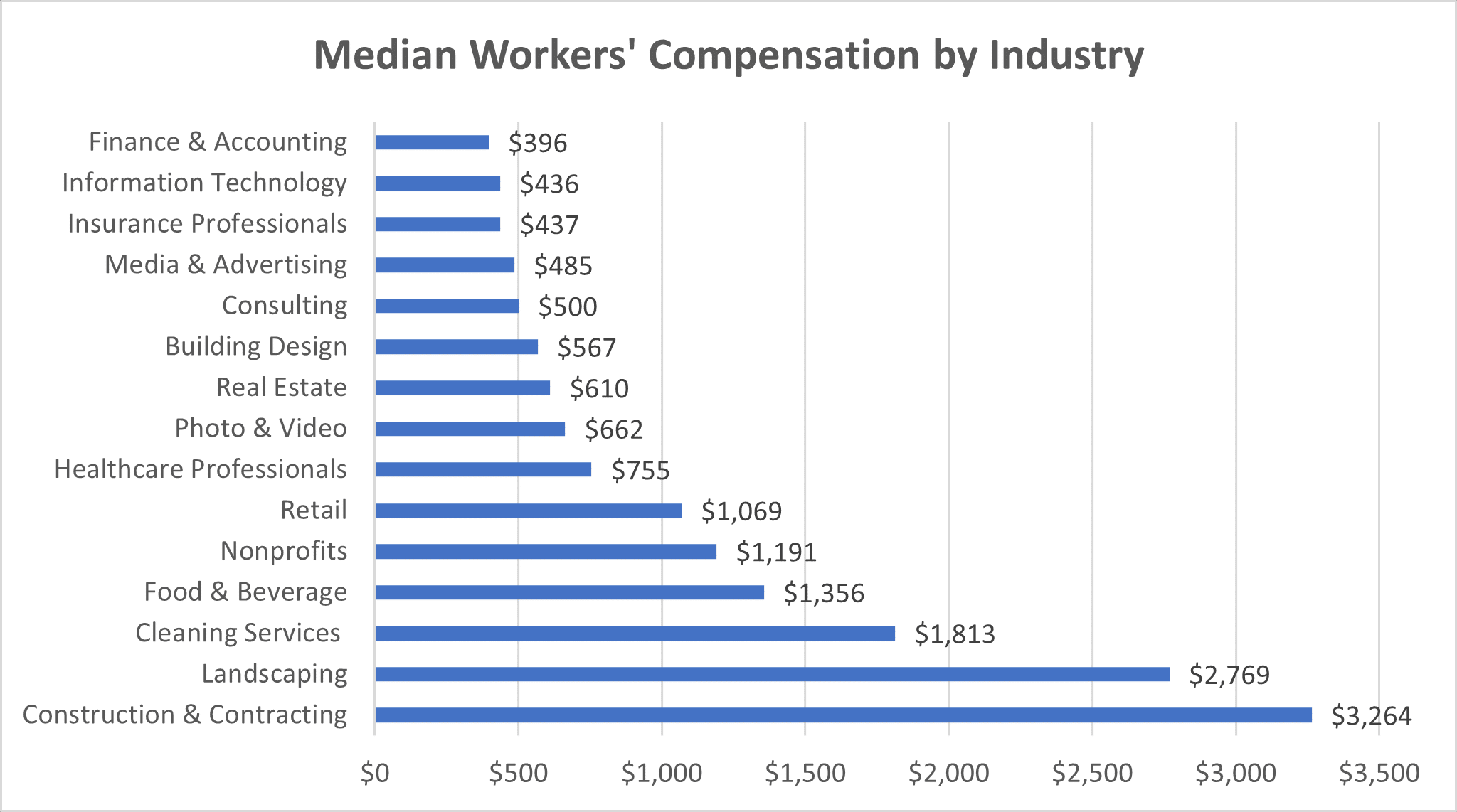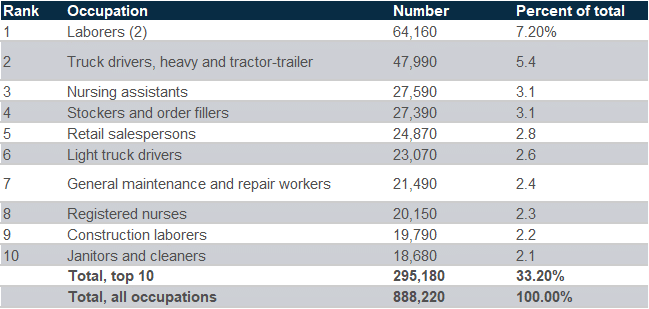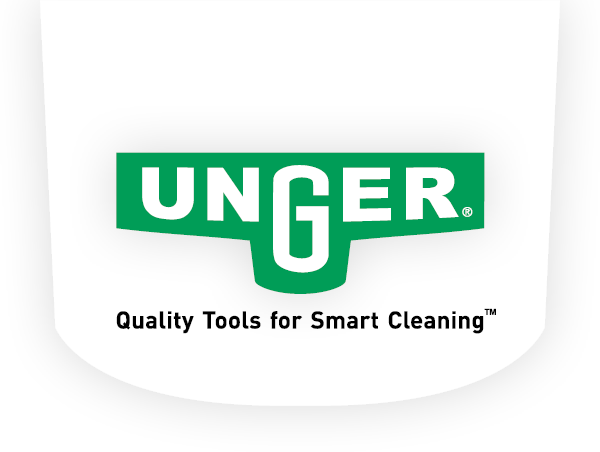NEW! Powerful Nano Filtration with Unger's HydroPower® Nano See The Product

Slip and Fall Accidents and How Your Floor Care Products May be Working Against You
Since the onset of the COVID-19 pandemic, facility managers, cleaning staff and building service contractors everywhere have been thinking about how to safely open up facilities and maintain an effective level of cleaning and disinfecting. Understandably, COVID-19 remains top-of-mind today, but let’s also not forget that slip and fall accidents remain one of the top safety risks to children and adults.
When you hear about workplace falls, especially with professional cleaners, you typically think of falls from heights, such as a scaffold or ladder falls which are unfortunately common among the window cleaning profession. However, according to the Bureau of Labor Statistics (BLS), the majority of fall-related injuries occur as a result of falls from same-level walking surfaces. In fact, the Liberty Mutual Workplace Safety Index indicates that falls on the same level were the second leading cause of all workplace injuries, accounting for 17.7 percent of direct costs associated with such injuries, or more than US$10.6 billion.
Combining the financial toll of workplace injuries with the physical implications (and not just for cleaning staff, but for all building occupants), floor safety and slip and fall accident prevention should be a focus of facility managers and building services contractors across industries as they train custodial staff, develop cleaning protocols and select floor care products.

Slip and Fall Injury Facts and Figures Tell the Story
According to the National Floor Safety Institute (NFSI), while slips and falls do not represent a primary cause of fatal occupational injuries, they are the primary cause of lost days from work. In addition, to see the larger financial impact, consider:
- Slips and falls are the leading cause of workers’ compensation claims and are the leading cause of occupational injury for people aged 55 years and older.
- 85% of worker’s compensation claims are attributed to employees slipping on slick floors (Industrial Safety & Occupational Health Markets 5th edition).
- 22% of slip/fall incidents resulted in more than 31 days away from work (US Bureau of Labor Statistics (2002).
- Compensation & medical costs associated with employee slip/fall accidents is approximately $70 billion annually (National Safety Council Injury Facts 2003 edition).
- According to Workers Compensation statistics from ITT-Hartford Insurance Company, falls account for 16% of all claims and 26% of all costs. This compares to 33% of costs associated with sprains and strains.
Top 10 Private Industry Occupations With The Largest Number Of Injuries And Illnesses, 2019

(1) Nonfatal injuries and illnesses involving days off from work for private industries; excludes farms with fewer than 11 employees.
(2) Laborers and freight, stock and material movers.
Source: U.S. Department of Labor, Bureau of Labor Statistics.
The Culprits Behind Slip and Fall Accidents
According to the Consumer Product Safety Commission (CPSC), floors and flooring materials contribute directly to more than 2 million fall injuries each year. Wet floors and walkways are the main causes of all slip, trip, and fall claims, but in general slips occur where there’s a lack of friction or traction between the footwear and the floor. Some slip incident causes are uncontrollable, such as a person’s physiological status (age, disability, etc.), but other contributors to slip and fall accidents are controllable, including:
- Unsafe, Unclean Floors: Wet or oily surfaces, occasional spills or inclement weather factors (ice, rain, or snow), floors that do not have some degree of traction
- Inappropriate Footwear: Such as high heels or shoes with smooth, traction-less soles
- Inadequate Hazard Identification: Lack of signage around wet floors
- Insufficient Training: Staff not understanding and/or practice correct cleaning and safety protocols
- Inappropriate, Non-Compliant Floor Care Products: Using the wrong floor cleaning solutions on the wrong surface type
Preventing Slip and Fall Cases with Commercial Floor Care Equipment
Given that companies and organizations bear the financial brunt of worker compensation claims, as well as the indirect costs (lost productivity and temporary employees), investing in floor care equipment that can help minimize injury saves money and disruption to service in the long run.
Effective and properly performed floor cleaning is key to controlling preventable slip and trip accidents. First and foremost, regular cleaning to remove contamination and debris can reduce accidents by making the surface a lower slip risk. Floors impacted by less frequent cleaning or poor cleaning techniques can pose an unacceptably high slip risk.
The fact is, we simply don’t need as much solution to clean floors with as we used to. Gone are the days of a water-laden flat head mop system and dual chamber mop bucket, which unarguably leaves behind more solution than modern floor mopping alternatives. Less solution used = less solution on floors = decreased chance of a slip and fall injury.
To help cleaning staff effectively carry out frequent floor and surface cleaning that effectively removes slip and fall hazards, these commercial cleaning products can make a significant impact:
- Wet Mops that Dry Floors Faster
Floors left damp by wet mopping are likely to be extremely slippery, but wet mopping should not have to introduce an additional slip risk. When sourcing commercial floor mops, look for floor care kits that are designed to actually dry floors faster, such as the Unger OmniClean. The OmniClean mopping kit includes a powerful scrub board and onboard wringer that together is shown to dry floors twice as fast, as opposed to a Kentucky mophead, in an Independent review by Sitemark® FM Best Practice Benchmarking. - High Quality, Durable Squeegees
Poorly built or maintained industrial floor squeegees can jeopardize the effective removal of water and debris. Whether cleaning and drying are part of your routine floor cleaning or tackling a larger job that requires a heavy-duty squeegee, squeegees with rubber blades can withstand the rigors of daily use better than other blade materials. Subjected to regular use, commercial floor squeegees also necessitate a sturdy frame to withstand the wear and tear endured when used on hard floor surfaces, including tile, concrete, asphalt and stone surfaces. - Mobile Floor Care Kits
Floor cleaning systems that easily glide – as opposed to multiple stationary buckets that are spill hazards – minimize the chance of wet trails left behind, causing a slip and fall risk to professional cleaners and building occupants. When looking for janitorial carts and mopping systems, source solutions that include high quality casters for increased ease of movement.

